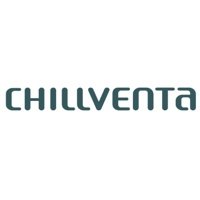[gravata] With proper planning, this resource enables optimum results to be reached. [/gravata] Awards should be preceded by training in order to enable salespeople to achieve better and longer lasting results. Sales incentive campaigns are used in various industries, as a way to stimulate business growth. But we need to plan them and execute them well, so that the results are positive and remain over time. The basic goal of a campaign like this is to increase the sales volume of a particular brand or product line. So, in general, it‘s done in partnership between a manufacturer (or importer) and its sales channels, rewarding salespeople and counter sales who reach a preset goal or achieve the best results in sales. Its use should be considered broadly and with a long-term vision. This is essential so that immediate results are not lost later. Frederico Moura, executive director of Full Trade Marketing, which specializes in such activities, points out that an effective campaign, which brings benefits to all those involved, should be concerned with various aspects. “Especially with the training of participants,” he says, noting that it’s not enough to assume that every good salesperson has a natural vocation for the position and a strong persuasion power. “Just vocation isn’t enough nowadays. You have to pass assurance to the buyer and this is connected to the knowledge of the product that you’re selling. No one sells what they don’t know”, he explains. This means that the incentive for professionals involved must be accompanied by training and support with information and guidelines. Preparation – to carry out their work and to maximize the effects of the campaign – is what will make the salesperson attain better and longer lasting results. What defines the type of campaign that’ll be developed is the objective to be reached by the company. “The action can be more tactical, to quickly reverse a market situation. Or it can aim to consolidate leadership, for example”, explains Frederico Moura. The period may be short or long and the prize can have variations: general (or democratic) or concentrated only on the best results, providing more aggressive prizes. With regard especially to the segment for refrigeration parts and components, Moura points out that it’s a professional public that seeks a specific solution. “An incentive campaign in this area aims to primarily generate preference for a brand,” he says. It’s necessary that salespeople combine motivation and knowledge, which will make the final buyer feel more secure with the service provided, becoming more loyal to the brand and to the place where he buys. In a recent article, Raul Candeloro, director of VendaMais Institute and author of several books on sales, reaffirms this idea that for an incentive campaign to succeed, it needs a very clear goal. “You can choose to encourage new sales, encourage re-sales to existing customers, encourage default rate reduction, improve speed of internal processes, improve sales of a particular product etc.”, he said. [box side=”alignleft” color=”box-cinza” pos=”horizontal”] HOW TO DO IT To start, the campaign planning involves knowing the brand and products well, along with the public that is the potential buyer. It’s also necessary to have a clear vision of the characteristics of the market, sales channels, professionals who serve customers. Some basic questions need to be answered:
- How does the brand differentiate itself from the others?
- What are the strengths to value?
- What are the needs and desires of the participants (salespeople)?
- What can be offered to add value to products?
- How does the customer select the product?
- How and where does he usually buy it?
[/box] How to measure team results and prizes offered should also be defined. “I believe more in the model in which the participant competes with himself, trying to surpass the goals and challenges. A campaign that aims to reward only the best of a team is likely to always reward the same ones and discourage the vast majority of participants”, says Moura. “A dash of motivation, exploring the participants’ emotional side and arousing in them the feeling of being part of something unique and different, also contributes to the success”, he adds. Regarding the prize, it’s necessary to take care that it really represents a motivation. Evaluate the public’s profile and try to understand what he values. Cash prizes are not always the best alternative. Travel and electronic equipment, for example, are options that are usually quite successful with participants. Defining the length of the action is another key measure. “Salespeople can’t constantly be in a sales campaign, otherwise it ceases to encourage. A good campaign has a day and time to start and to finish”, teaches Raul Candeloro, who recommends that the time period be appropriate to the main purpose and goals established. “If it’s too short, salespeople might not have enough time to reach the goals. If it’s too long, it can demotivate half way through”, he says. At the end of the campaign, it’s best not to delay in giving out the prizes. Candeloro recommends having a celebratory event, with presentation of prizes, thanking their participation and evaluation of results. “A good closing is the key so that your next campaign starts well”, he warns. Finally, Frederico Moura draws attention to the need to develop permanent actions in this area, don’t think that an isolated activity will solve the problems and will move the company to a new level. “The incentive campaign is a seed that grows into greater understanding, respect and satisfaction for a brand on all sales chain links: retail, sales staff and final consumers. And this seed needs to be watered constantly to grow”, he says. [box side=”alignleft” color=”box-cinza” pos=”horizontal”] SECRETS TO GOOD PLANNING When planning and conducting a campaign like this, it’s necessary to evaluate several factors and details. Specialists like Frederico Moura, from Full Trade Marketing, gives some valuable tips:
- Understand the brand’s context and the market’s scenario;
- Identify well the participant’s profile and the vision he has of the brand;
- Determine what to offer as an attractive reward to generate public preference for the brand;
- Communicate clearly, creating links with participants and the public;
- Set challenging goals, but ones that are possible to achieve.
[/box]



